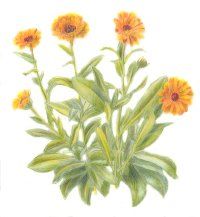When looking for an herbal remedy to treat skin or wounds, think flower power -- or, more specifically, calendula. Its flowers, and occasionally its leaves, can be used to treat a variety of afflictions in different ways.
Calendula has a long history of use as a wound-healing and skin-soothing botanical. This lovely marigoldlike flower (although called pot marigold, it is not a true marigold) is considered a vulnerary agent, a substance that promotes healing. Calendula also has anti-inflammatory and weak antimicrobial activity. It is most often used topically for lacerations, abrasions, and skin infections; less commonly, it is used internally to heal inflamed and infected mucous membranes.
Advertisement
